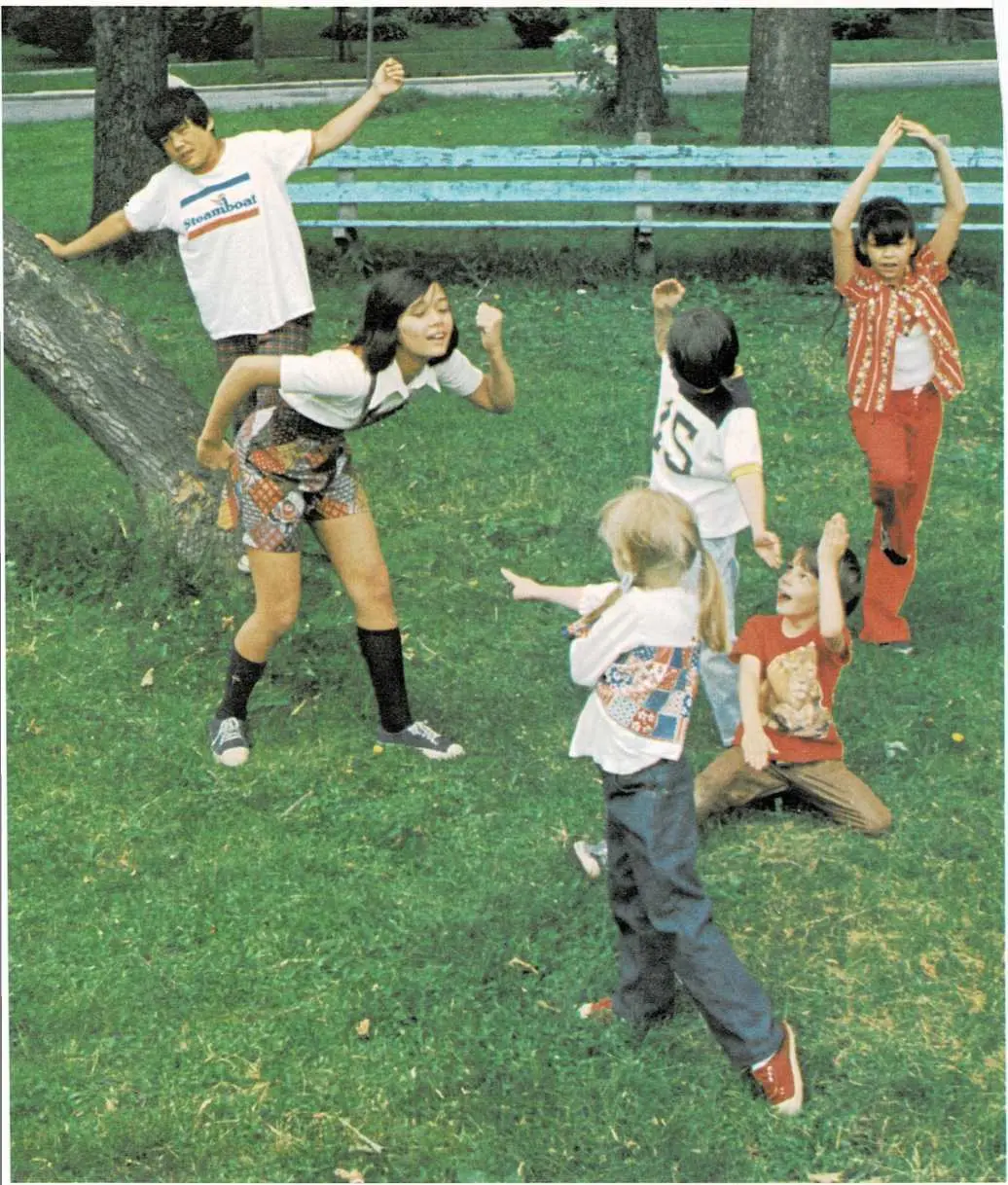Latchkey children
by Stephen H. Sheldon, D.O., F.A.A.P.


“Latchkey children” is a term for youngsters less than 13 years old who
care for themselves for significant periods of time before and/or after
school and during vacations. In some families, these children may also
be called upon to care for younger brothers and sisters when parents are
not at home. “Latchkey” refers to the house key some of these children
wear around their necks.
Self-care has increased dramatically over the past decade. It is
estimated that about 13 per cent of all children between 5 and 13 are
regularly left to care for themselves during a significant portion of
the day. This translates into approximately 2 million to 4 million
children in self-care.
Why are so many children left in self-care?
The “latchkey” phenomenon has grown in recent years for many reasons. As
the number of single-parent households increases, the number of children
in self-care can be expected to increase.
Single parents are parents without partners to help them share the
responsibility of supporting the family and caring for their children.
Often these parents are isolated and have few resources. Financial
responsibilities require single parents to work at jobs that are less
personally satisfying, and they often find it necessary to work at jobs
in which there is little control over hours.
School hours often overlap with times parents are required to be at
work. Hours when school ends usually do not coincide with job-quitting
times. This mismatch of the parent’s and child’s responsibilities has
created a need for alternate plans for schoolage children before and/or
after school. Single-parent families with younger children who are not
yet old enough to attend school must find appropriate day care or
babysitting for the entire day.
In two-parent families, more options exist, but parents often do not
have the option of
sharing responsibilities for child care before and after school. Two
incomes are required to support the family, and often both jobs require
parents to be at work and away from home before school starts, at the
children’s lunch hours, or after school. Therefore, these families also
face the dilemma of mismatched beginning and ending times for school and
work.
Options for working parents
In many situations, parents cannot be home to care for their children at
certain times of day. Other options exist, however, and the variety of
options often depends upon the community in which the family lives. Day
care for children under 5 years old is available in most communities.
Appropriate day care can range from formal private enterprises or
businesses, which utilize well-trained professional staff and which are
inspected and certified by health departments and agencies, to
individuals who care for children in their own homes. Often, private
homes also require certification and inspection. Friends, neighbors, and
relatives may care for children in their homes or in the family’s home.
Similar day-care situations may also be available for older children.
(For additional information, see [Day care] in For Special
Consideration.)
For school-age children, formal beforeschool and after-school programs
may provide transportation to and from school, home, and special
after-school activities. After-school programs are available through
many school systems. Neighbors or relatives may also be able to care for
children whose parents are at work.
Some schools and communities provide sports activities, breakfast,
lunch, and snack programs. Others provide enrichment programs and other
activities that complement children’s schoolwork. Community agencies,
the YMCA, and park districts may also provide these services.
Children in self-care
Despite all efforts, some families may not have the resources to provide
before- and after-school alternatives for their children. Even if the
family has enough financial resources, services may not be available in
the community. Children must then care for themselves until parents get
home. For some children, self-care times are a small part of each day,
but other children face long periods of caring for themselves. Some
children in self-care may have to learn to perform such tasks as
preparing lunch or dinner.
Parents rarely find these self-care situations comfortable, but they
have no other choice. Concerns and fears of parents and children vary
from victimization, accidents, and injuries to the psychological stress
family members experience during these times.
A decision to leave a child in self-care should be based on the
developmental and emotional maturity of the youngster, rather than on
the child’s chronological age. Some 9-year-old children are better able
to care for themselves than some 12- or 13-year-olds are. Parents should
consider their child’s maturity first and should make the decision
together with the child.
Some hazards in self-care may be minimized by forethought, structured
guidance that anticipates problems, and emergencyprocedure practice
sessions that introduce the child to self-care experience and that
develop contingency plans.
Following are some problems and hazards that might occur during
self-care and some ways to minimize these risks.
Victimization
A special fear for parents and children is the danger of physical and
sexual molestation when children are caring for themselves. Whether or
not self-care is involved, children may be particularly vulnerable
during the walk home from school.
Children should be taught never to talk with strangers and never to
accept rides from people they do not know, regardless of the story
given. Children should avoid people who know them but whom they do not
know. Children—and parents, as well— should understand that the
worst thing that
can happen if a child runs away from a stranger, refuses to talk to a
stranger, or hollers for help may be slight embarrassment. The
alternative is much worse.
Some communities have developed “Safe House” programs. A bright, easily
recognizable sign is placed in a window of the home of each
participating family, indicating that children can ring the bell and get
help. These families welcome children who are being bothered by a
stranger, are frightened, cannot reach their parents, and feel they need
an adult’s help.
Children in self-care should learn to lock the doors once inside the
home, and they should be instructed not to open the door for anyone
unless they and their parents have previously arranged it. Children
should know how to call the police or a neighbor when they are
frightened by a persistent stranger—and they should learn always to
call parents if there is any question about visitors to the home.
Children in self-care should also learn how to respond to strangers who
call on the telephone. Children should not tell anyone that they are
home alone. An appropriate response might be, “My mom (or dad) can’t
come to the phone right now, but I’ll have her (him) call back as soon
as she’s (he’s) free.” As soon as they are able, children should learn
to write down the name and phone number of the caller. If necessary, a
parent can be telephoned and given the message so the call can be
returned.
Accidents and injuries
Accidental injuries occur with staggering frequency among children and
young adults and are a major concern of parents whose children are left
in self-care. Parents of “latchkey” children are anxious about accidents
because it is difficult for them to reach their children quickly. In
addition, working parents are more frightened by accidental injuries
because they learn of the injuries through phone calls from a neighbor,
school nurse, or relative.
Data appear to indicate, however, that children caring for themselves
are not often accidentally injured, and parents of “latchkey” children
report remarkably few accidents. Parents’ attitudes are important
in determining if and when they will work out and use
accident-prevention strategies. Physical distance from their children
and the fear of accidents tend to encourage parents to teach children
how to prevent injuries when they are home alone. Children in self- care
tend to take charge of themselves and take responsibility for the
outcomes of their behavior, rather than place the responsibility on an
older sibling or any other single person. They are frequently taught
what to do and rewarded for successful behavior with praise, increased
responsibility, increased allowance, and other kinds of recognition. For
this reason, classical discovery learning and simple
behavior-modification techniques may be very helpful in decreasing the
frequency of accidents and injury. Some accident-prevention techniques
parents can employ are:
Anticipating outcomes of behavior
Teach children to anticipate what might result from various behaviors.
Playing outside should be limited to the yard. Children should not play
in the street or alley, and should understand what the dangers are.
(Falls and pedestrian injuries are common dangers in these areas.)
Inside the home, electric appliances and the stove should be off limits
to younger children.
Learning basic first aid
Children in self-care should be taught basic first aid for minor
injuries. They can learn to control bleeding from minor cuts by simply
applying pressure over the wound, and to place ice over simple bumps and
bruises. When injuries do occur, children should also know how to get
help. They should be familiar with using the telephone to call for help.
They should memorize important phone numbers (parents, relatives,
neighbors, police and fire departments) or have them listed in a
prominent place, and should call if they are injured.
Understanding basic emergency procedures
Children should be taught basic emergency procedures, such as escaping
from the home if a fire breaks out. Parents should
identify at least two escape routes and should have practice fire drills
regularly, so that children will be familiar with the procedure if it is
needed. Children should also learn and practice the “drop and roll”
procedure to extinguish flames in case their clothing catches fire. They
should know that they are never to run under those circumstances.
Anticipating problems that might occur when children are caring for
themselves, preventing them from happening, and practicing emergency
procedures are the best ways to decrease the risks and fears of children
and parents.
Psychological problems
Some experts believe there are certain psychological risks for children
left in self- care. These include developing excessive fear of being
left alone, feeling rejected, and becoming alienated from the family.
Other experts argue the positive effects of the self-care experience.
These include increased sense of responsibility, increased self-esteem,
and increased self-worth. Much of the psychosocial and developmental
impact of leaving children on their own is related to the level of
maturity and development. Some children thrive on the self-care
experience, while others are paralyzed by it. It is important for
parents to gauge their children’s readiness for self-care and gradually
introduce them to it by arranging for a graded increase in
responsibility, slowly extending the time of self-care, and providing
appropriate guidance for anticipated problems and practice sessions for
emergencies. Using appropriate feedback and rewards for successful
performance increases the children’s confidence in handling situations
when they arise and their ability to support increasing levels of
responsibility.
The self-care experience is not for every family. Some children and
parents are ready for it. Others are not. Alternatives should be made
available, both at home and through school or community groups, and
children should not be hurried into a situation for which they are not
prepared. Gradual introduction, careful preparation, and appropriate
rewards can minimize risks and maximize benefits for all members of a
family.
